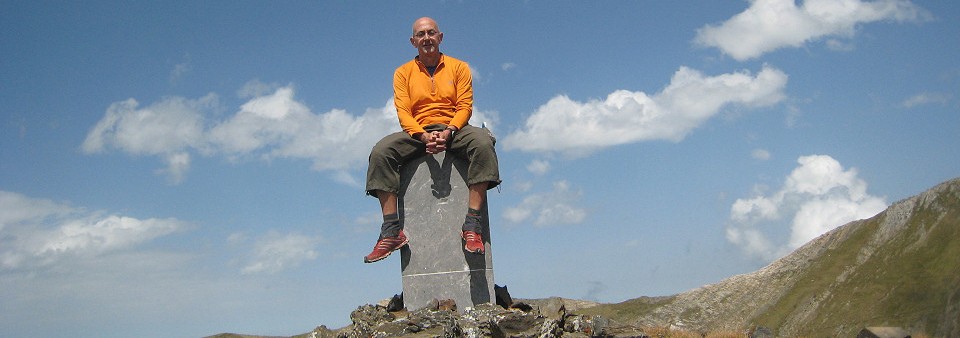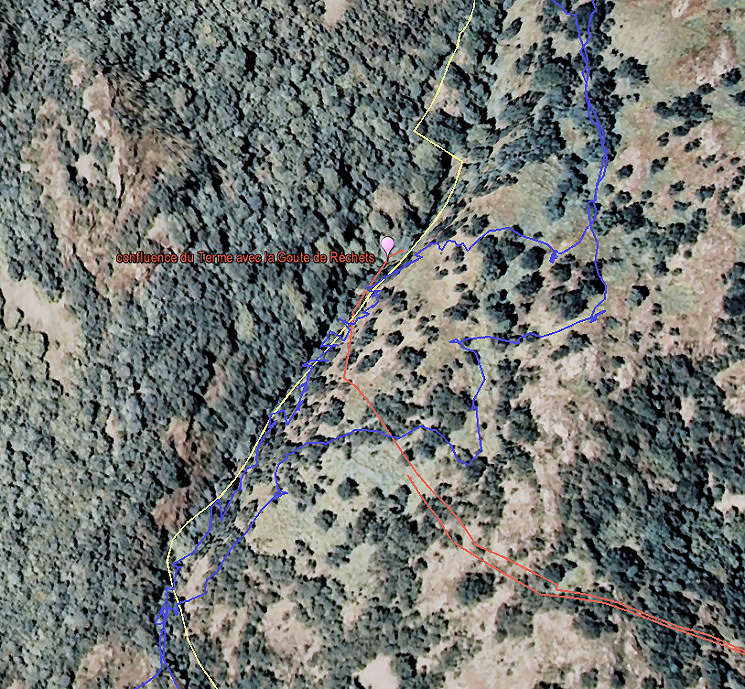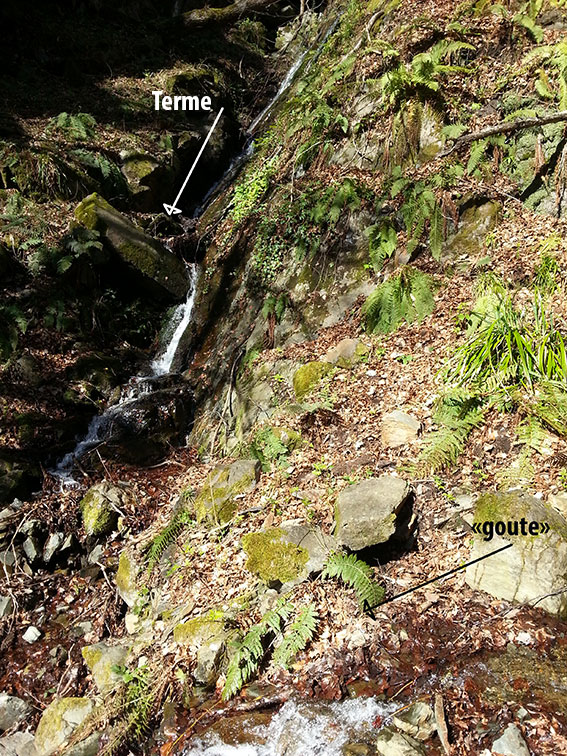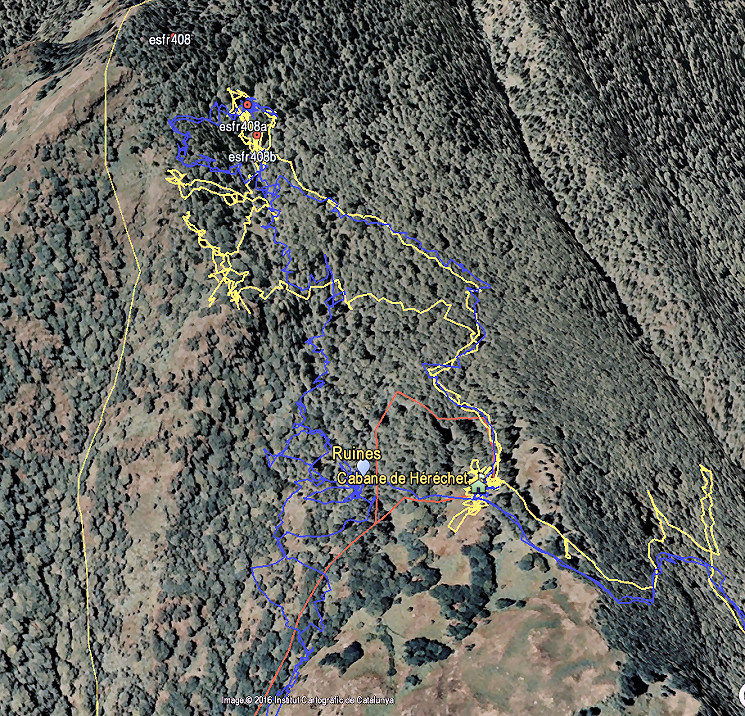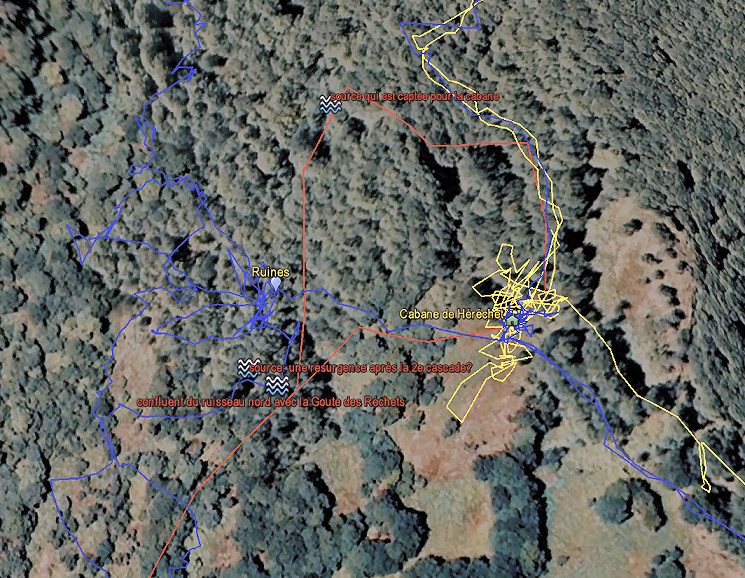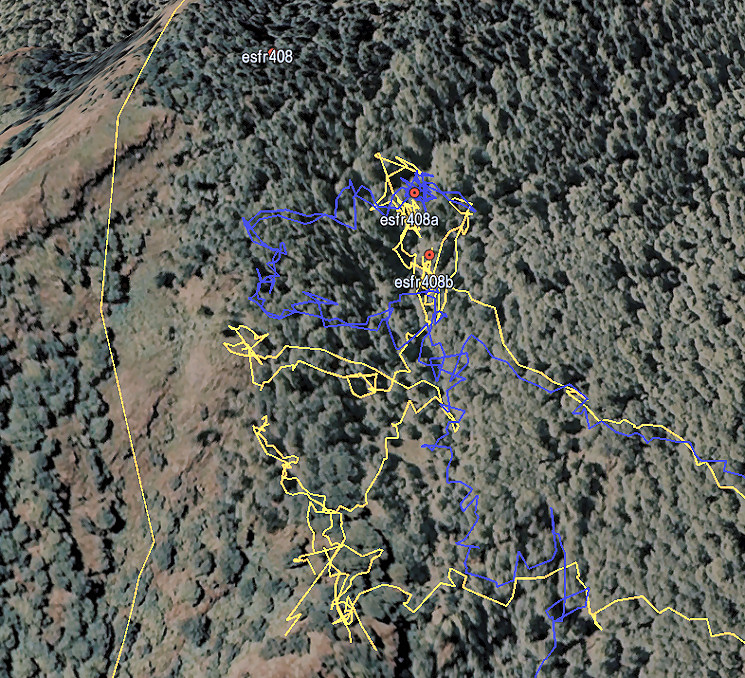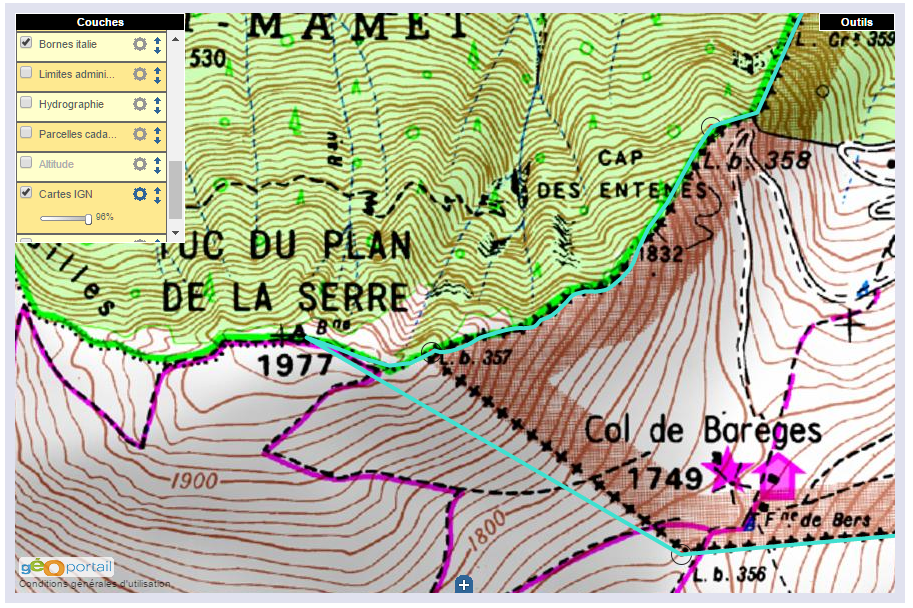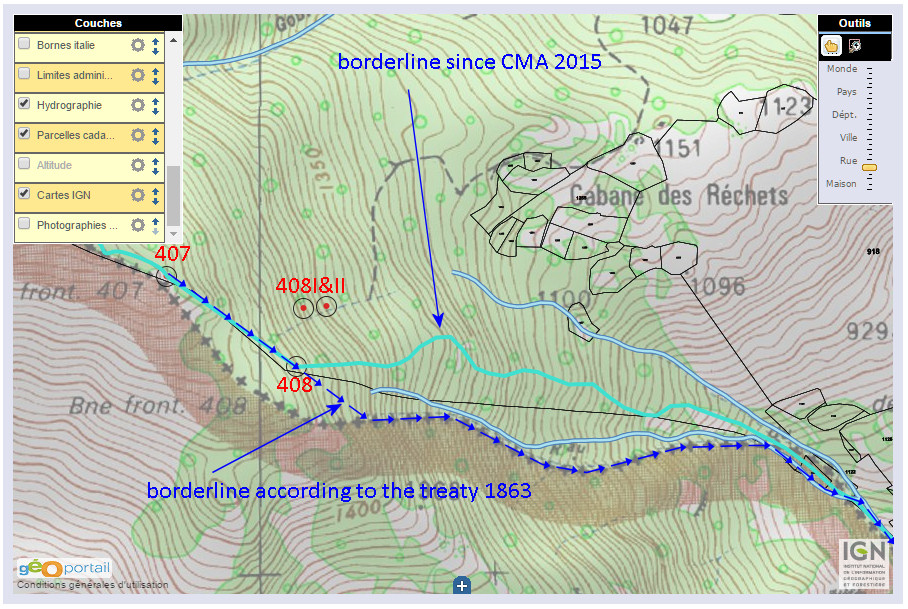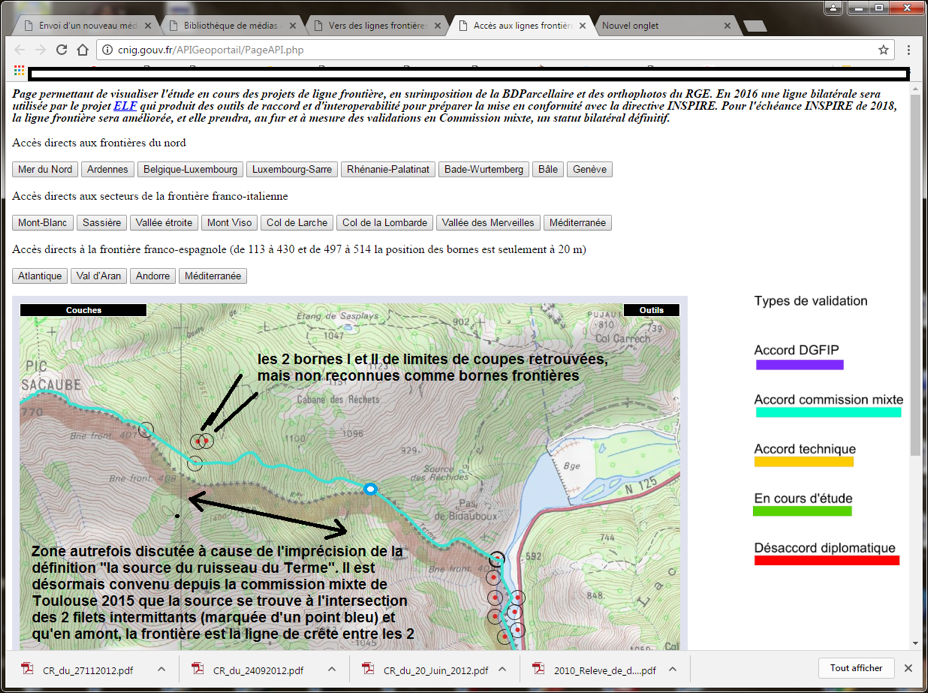
What is the Bidaubus-dispute?
We are talking about the esfr-borderline between bm407 and 409, not far from Bagnères-de-Luchon. The dispute has been described in full detail on earlier webpages and blogposts. A starting point could be this post from 2018 and this video:
The different views on the borderline between bm407 and 409 : a summary
The borderline was described precisely in the Bayonne-treaty of 1862-1863. But let’s not forget that the borderline between the communities of Fos and Bausen has a much longer history. Joël Molinier describes the history in this article (in French, this is the English version).
But back to the Bayonne-treaty. Let’s show that borderline on a map (the blue part of the borderline is not contested).

But in the 1960-ies, the tresspassing of French territory by a Spanish logging company led to a new discussion. Central question: where is the ‘Ruisseau du Terme’? Is it the northern stream or the southern one? In the end a new borderline was agreed upon in the binational ‘Commission des Pyrénées’ and 4 intermediate markers were installed.
Since this was agreed upon bilaterally in their meeting of 1970, this borderline should be considered as the official current borderline. But in fact – as far as we know – nothing changed in the field and in the use of the terrain by French locals. On a map this 1970-version:

However: in 2015, as a result of a joint digital measurement of the esfr-borderline, a sort of diplomatic solution was proposed in the Commission Mixte d’Abornement (CMA) of 2015. Resulting in a borderline which has lost any connection with the Treaty-text. Don’t forget: it’s still a proposal, lacking an official binational approval.
But surprisingly, this new borderline is already implemented on the maps.

Who is involved in this dispute?
From our side it’s Michel Molia, myself and since 2023 Joël Molinier (a retired professor on European Law). We think that the borderline of 1862 is very well described in the treaty-text and leaves little to zero room for confusion. And thus we believe that the 1970-change and the proposal of 2015 violate the treaty, both leading to territorial losses for France.
The originator of the 2015-proposal seems to be Pierre Vergez of the French CNIG/ING who was very defensive to us about his solution. He waved with convincing Spanish counter-arguments but never disclosed them. It has been silent from his side since a few years and in these proceedings, we read that he retired in 2023. And then there is Jean-Paul Laborie – the border-commissioner in this area – who is following the official point of view from a sideline.
On a local administrative level, the mayors of Bausen (Spain) and Fos (France) have an interest in the dispute. Especially the municipality of Fos should be concerned: they are in danger of losing ± 8 hectares of their territory.
2023: The dispute presented for arbitration on a European level
This is an initiative of Joël Molinier. Within the European Union there is the institution ‘European Regional Development Fund’ which has a department (B-solutions) which aims at “solving cross-border obstacles”.
The matter has been presented to B-Solutions in june 2023 with the approval of the mayor of Fos. Further communication will be to the mayor and so far there has been no news.
2024: The “Terrain indivis de Bidaubus” better assessed
There is circumstantial evidence for our point of view in the description of the adjacent ‘terrain indivis de Bidaoubous’. It’s a strip of Spanish territory “more or less parallel to the Ruisseau du Terme” according to the treay. It kept a common right of use for both Bausen and Fos in the 1862-treaty.
Its southern limit – including 4 engraved crosses A to D on ‘Mails’ (rocky outcrops) – was approximately estimated on the following map. The toponyms of the ‘Mails’ cannot be found back on any map. Thus the intermediate distances and natural characteristics of the terrain were used to determine the supposed spots of crosses A to D. However, none of these crosses have been found back so far.
And to be honest, this estimated version is not that parallel to the Ruisseau du Terme.

But Joël Molinier found in 2024 in 19th-century Fos-council proceedings a new clue. The shepherds of Fos complained in 1866 that they could’t reach the ridge at the level of cross B anymore, the versant being too steep there. The conclusion is that the lower cross C cannot be located at the descending hillridge. Because in that case the shepherds could still get to the ridge and up to cross B without crossing the southern ‘Terrain Indivis’-limit.
But another ‘Mail’ was found on the maps and Google Earth which fits in mentioned intermediate distances.
That led to a map in which the ‘Terrain Indivis’ is definitely more parallel to the Ruisseau de Terme than in the previous estimation. Needless to say that in a more northern interpretation of the Ruisseau du Terme, the descripton of this adjacent strip being parallel to the Ruisseau, does not fit anymore.

2024: The ‘Croix de Malfrenor’ still not found
This double-branched cross was probably shown in 1959 to the border-commissioners Sermet and Alija. In a cadastral map of the 19th century it is positioned at the Ruisseau du Terme. There have been various fruitless expeditions (Michel Molia, Corinne Gourgeonnet and me) to find this cross. The significance in this discussion is however limited because the cross is not mentioned in the Treaty.

2024: Still to do
We’d love to find back the Bidaubus-crosses A to D. The presumed sites of crosses B, C and D have already been visited with no results so far. However: the presumed site of cross C has changed and that requires a new trip.
I already made a sketch of the best route if we study the maps.

I also wonder if we can find back the remains of the original bm408, Sermet records that they were still there in the 1950-ies when a new bm408 was built. It would confirm that the new bm408 is indeed at the original position, like bm407 where the original 1862-bm is still present.
And the Croix de Malfrenor is intriguing, it must be still there.
Reasons enough to go back to that beautiful and mysterious corner of the Pyrenees and wander around to find new clues. For a part to defend our claim that the 1970- and 2015-versions are wrong. And for a larger part for the sheer fun of it.
